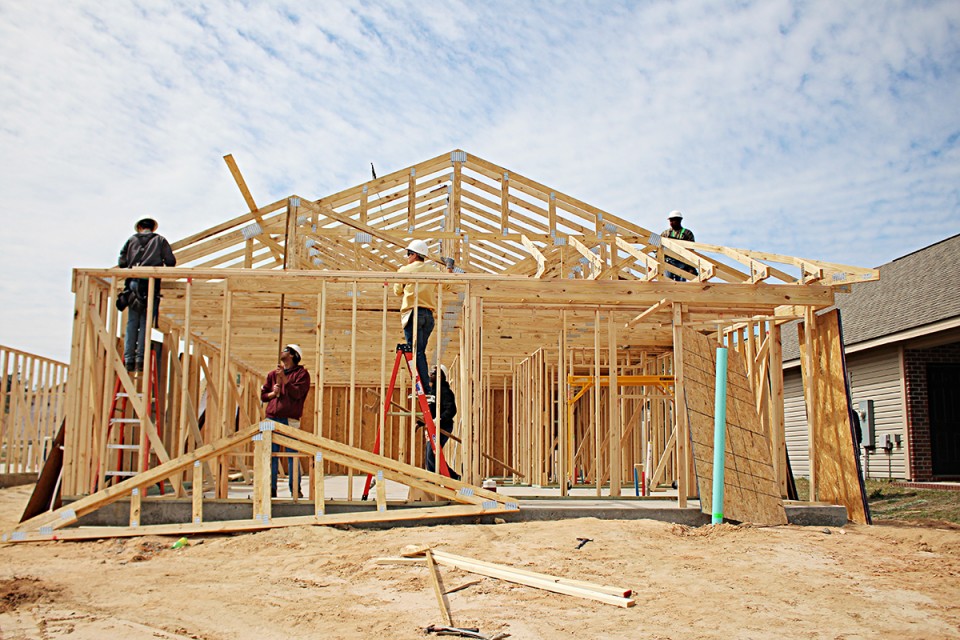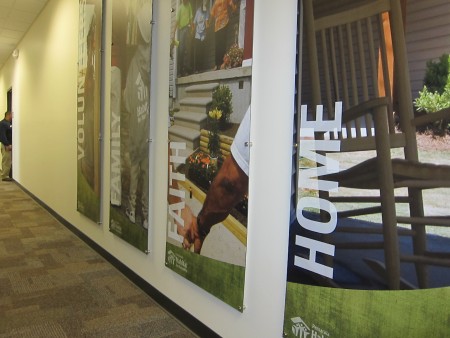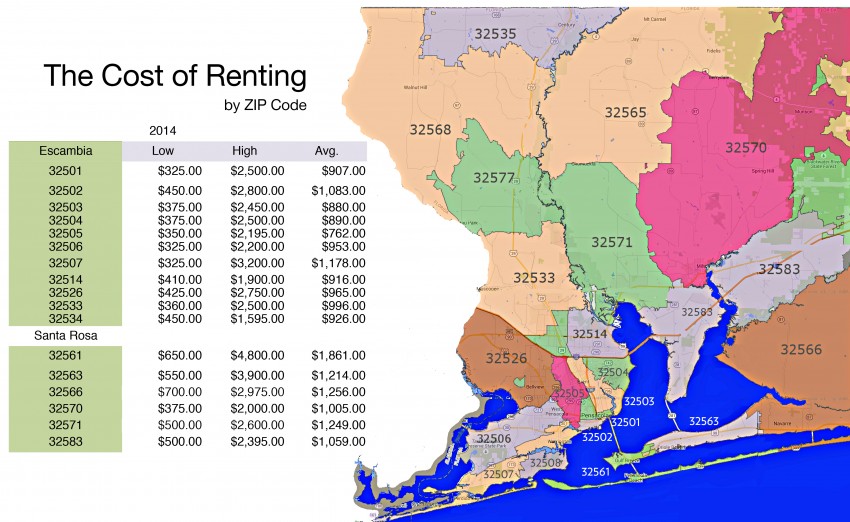Habitat's turn toward building community
- June 7, 2016
- / Shannon Nickinson
- / economy

A Habitat for Humanity build site.
How do you build citizen-powered change?
That question was at the foundation of the Studer Community Institute, which has been for nearly three years working to harness citizen engagement to improve the quality of life in the community.
Habitat for Humanity of Pensacola is doing its part, delving more into community development at an annual community summit June 9-10.
“It goes to what we did last year,” says Tim Evans, Habitat’s executive director. “It takes more than addressing just housing. For example, the Studer Community Institute is focusing very strongly on early childhood education, but not exclusively. And I think when we started talking about this year, we wanted to have a chance to share the different threads of sustainability for the entire community.”
Speakers for Thursday will include Tom Chobolla, senior vice president of field operations for NeighborWorks America, an association of 240 entities nationwide that work on community development and affordable housing. The group addresses how those efforts provide a foundation for a community to develop in a sustainable way, Evans says.
Evans says the Pensacola Habitat chapter will be the first Habitat affiliate to charter with NeighborWorks, and it will represent a turn of sorts for the local chapter to work more in neighborhood revitalization than strictly focusing on homebuilding.
Evans says the link to NeighborWorks will give locals access to expertise in training and grant funding streams not previously available.
“Our focus has been on homes for quite some time,” Evans says. “We are looking at expanding out, and including community development in the larger discussion. That’s key to a sustainable community concept, where all residents have a good quality of life and the community works for everyone.”
Local citizen-change speakers
Among the local voices advocating for citizen-powered change at the Thursday summit:
— Local environmental activist Christian Wagley, who will speak to the importance of maintaining a sensitivity for natural environment and adequate green space. On Friday, he will lead those interested in a “greening up” clean up in Brownsville.
— Robin Reshard, who will talk about the strength in a community in diversity and inclusion. On Friday, she will lead a walking tour of the historic Belmont-DeVilliers neighborhood to highlight that community’s rich, diverse history.
— Former Pensacola City Manager Al Coby, who will talk about, as Evans says, “what can citizens reasonably expect from their municipal government and what can government reasonably expect from their citizens.” His Friday sessions will focus on the skills that neighborhood association, civic groups and other residents need to develop to navigate city government and advocate for their communities.
— Jill Thomas, with Innisfree Hotels, who will speak about the role of corporate citizens in a community, and the obligation to give back to the community. That Friday real-world experience will include the community garden that Innisfree supports in Pensacola.
Housing remains key
Affordable housing remains a cornerstone of Habitat’s work. Last year’s summit revealed that Escambia County was about 3,000 housing units short of the demand for affordable housing.
Data from the Pensacola Metro Dashboard, created by SCI and the University of West Florida to track the economic, educational and social well-being of the community, shows half of families in Escambia County are rent-burdened.
That means they spend more than 30 percent of the recommended amount on housing. It means they have less income for other spending, and it means they can be struggling to pay other bills if housing chews up such a large portion of the monthly income.
Zach Jenkins, director of the Haas Center for Business Research and Economic Development, wrote in February that the number of low-income renters in the Pensacola area has risen in the last nearly decade — from 74 percent in 2005 to 88 percent in 2014.
Jenkins wrote that in 2004, a low-income family of four living in a two-bedroom “standard quality” rental in the Pensacola area had “affordable housing” — meaning the rent cost less than 30 percent of their monthly income.
By 2015, that same family earned $2,575 per month, but the same two-bedroom apartment rented for $828 per month. An “affordable” rental — one that cost no more than 30 percent of the monthly budget — would rent for $772.
The National Low Income Housing Coalition released a report “Out of Reach.” It’s an analysis of housing affordability — or lack thereof — for minimum wage workers.
Florida ranks 17th in the nation for something the authors call “highest housing wage” — how much someone needs to make an hour to afford a two-bedroom apartment.
Statewide it’s $19.96 an hour.
That means if you earn minimum wage, you’d need to work 99 hours a week to be able to afford said two-bedroom unit — a home you’d presumably be too exhausted to do much besides sleep in.
Which means that piece of Habitat’s work won’t go away.


 CivicCon launches with a look at good growth in cities
CivicCon launches with a look at good growth in cities
 Building stronger brains one baby, one parent at a time
Building stronger brains one baby, one parent at a time
 SCI debuts commercial on Early Learning City
SCI debuts commercial on Early Learning City
 Entrecon: World class speakers and an opportunity to sharpen skills
Entrecon: World class speakers and an opportunity to sharpen skills
 PYP Quality of Life survey 2017
PYP Quality of Life survey 2017
 EntreCon Pensacola 2016: A look back
EntreCon Pensacola 2016: A look back
 Leadership tip: getting better employee takeaways
Leadership tip: getting better employee takeaways
 Leadership tip: be interested instead of interesting
Leadership tip: be interested instead of interesting
 Leadership tip: delivering difficult messages
Leadership tip: delivering difficult messages
 Brain Bags boost Arc, Early Childhood Court programs
Brain Bags boost Arc, Early Childhood Court programs